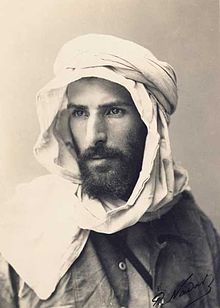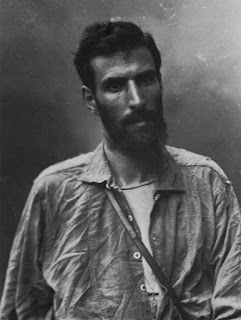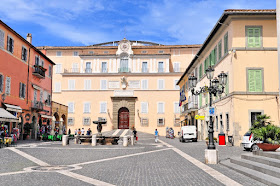Trajan - Roman emperor
Italy elects its first parliament
1861 vote preceded proclamation of new Kingdom
Italians went to the polls for the first time as a nation state on this day in 1861 to elect a government in anticipation of the peninsula becoming a unified country. The vote was a major milestone in the Risorgimento - the movement to bring together the different states of the region as one country - enabling there to be a parliament in place the following month and for deputies to declare Victor Emmanuel II of Sardinia as the first King of Italy in March. The first parliament convened in Turin as Rome remained under the control of the Papal States until it was captured by the Italian army in 1870. The body comprised 443 deputies representing 59 provinces. Some provinces, such as Benevento, near Naples, elected just one deputy, whereas the major cities elected many more. Turin, for example, chose 19 deputies, Milan and Naples 18 each. The eligibility rules were so specific that of a population of around 22 million, only 418,696 people were entitled to vote. In line with the procedures set down in the electoral laws of the Kingdom of Sardinia, only men could vote - women were not fully enfranchised in Italy until 1945 - and only men aged 25 and above who were literate and paid a certain amount of taxes. Read more…
__________________________________________________________
Giovanni Arpino - writer and novelist
Stories inspired classic Italian films
The writer Giovanni Arpino, whose novels lay behind the Italian movie classics Divorce, Italian Style and Profumo di donna – later remade in the United States as Scent of a Woman – was born on this day in 1927 in the Croatian city of Pula, then part of Italy. His parents did not originate from Pula, which is near the tip of the Istrian peninsula about 120km (75 miles) south of Trieste. His father, Tomaso, was a Neapolitan, while his mother, Maddalena, hailed from Piedmont, but his father’s career in the Italian Army meant the family were rarely settled for long in one place. In fact, they remained in Pula only a couple of months. As Giovanni was growing up, they lived in Novi Ligure, near Alessandria, in Saluzzo, south of Turin, and in Piacenza in Emilia-Romagna. His father imposed a strict regime on Giovanni and his two brothers, who were required to spend a lot of their time studying. In fact, Giovanni was separated from his family for a while during the Second World War, when his mother returned to the Piedmontese town of Bra, not far from Saluzzo in the province of Cuneo, to deal with the estate of her father, who passed away in 1940. Read more…
_________________________________________________________
Giuseppe Verdi – composer
How Italy mourned the loss of a national symbol
Opera composer Giuseppe Verdi died on this day at the age of 87 in his suite at the Grand Hotel et de Milan in 1901. The prolific composer who had dominated the world of opera for a large part of the 19th century was initially buried privately at Milan’s Cimitero Monumentale. But a month later Verdi’s body was moved to its final resting place in the crypt of a rest home for retired musicians that he had helped establish in Milan. An estimated crowd of 300,000 people are reported to have turned out to bid Verdi farewell and ‘Va, pensiero’, a chorus from his 1842 opera Nabucco, was performed by a choir conducted by Arturo Toscanini. Verdi meant a great deal to the Italian people because his composition, ‘Va, pensiero’ had been the unofficial anthem for supporters of the Risorgimento movement, which had sought the unification of Italy. In his early operas Verdi had demonstrated sympathy with the cause of the Risorgimento and people had come to associate him with the movement’s ideals. But as he became older and more prosperous he had chosen to withdraw from public life and had established himself on a country estate just outside Busseto, the town of his birth, near Parma in Emilia-Romagna. Read more…
__________________________________________________________
Frank Nitti - mobster
Barber who became Al Capone’s henchman
The mobster who achieved notoriety as Frank Nitti was born Francesco Raffaele Nitto it is thought on this day in 1881, although some accounts put the year of his birth as 1886. Nitti, who was raised in Brooklyn, New York, where he and Al Capone - his cousin - grew up, would eventually become Capone’s most trusted henchman in the Chicago mob he controlled. After Capone was jailed for 11 years for tax evasion, Nitti was ostensibly in charge of operations. Unlike many of the American Mafia bosses in the early part of the 20th century, Nitti was not a Sicilian. His roots were in the heart of Camorra territory in the shadow of Vesuvius, his birthplace the town of Angri, 8km (5 miles) from nearby Pompei. Angri was also the hometown of Capone’s parents. Francesco’s father died while he was still a small child. His mother, Rosina, married again within a year to Francesco Dolengo, who emigrated to the United States in 1890. Nitti, his mother and his sister, Giovannina, left Italy to join him in 1893, settling in Navy Street, Brooklyn. He was enrolled in a local school but left at around age 13, taking a job as a pinsetter in a bowling alley before becoming a barber. Read more…
___________________________________________________________
Roberto Paci Dalò – composer and film maker
Music maker coined the definition ‘media dramaturgy’
The award-winning contemporary musician and composer Roberto Paci Dalò was born on this day in 1962 in Rimini. Paci Dalò is the co-founder and director of the performing arts ensemble Giardini Pensili and has composed music for theatre, radio, television and film. After completing musical, visual and architectural studies in Fiesole, Faenza and Ravenna, Paci Dalò focused on sound and design and their use in film, theatre and collaborative projects. He has been a pioneer in the use of digital technologies and telecommunication systems in art and has been particularly interested in performing arts as a meeting point of languages. Since 1985 he has written, composed and directed more than 30 groundbreaking music-theatre works which have been presented worldwide. Paci Dalò has composed music for acoustical ensembles, electronics and voices and has produced radio works for the main European broadcasting corporations. His films and videos have been regularly presented in international festivals. Paci Dalò taught Media Dramaturgy at the University of Siena. Read more…



















